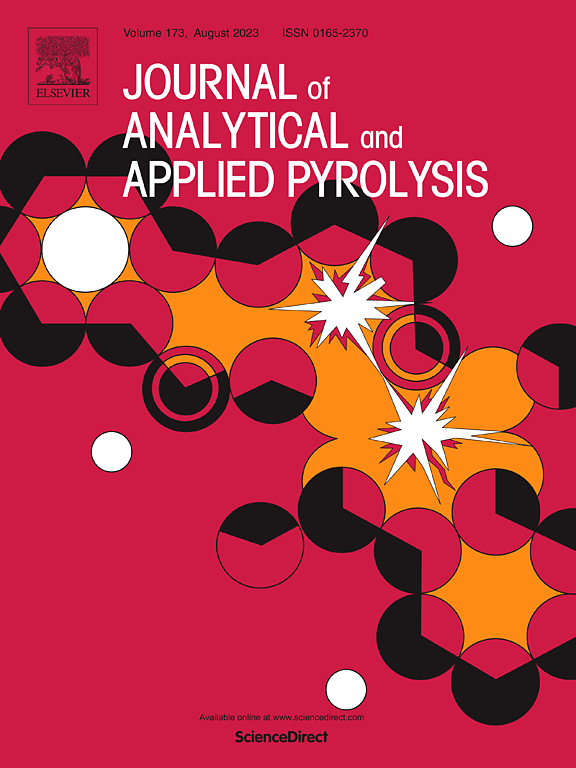Co-conversion of biomass and petroleum vacuum residue in delayed coker unit
IF 5.8
2区 化学
Q1 CHEMISTRY, ANALYTICAL
引用次数: 0
Abstract
The co-conversion of rice straw biomass and petroleum vacuum residue is studied under the conditions of a commercial delayed coker unit. Co-conversion results in an increase in coke yield and decrease in pyrolysis oil yield as compared to the petroleum vacuum residue. The reduction of the acidity (TAN) of liquid product as compared to weighted average contribution from vacuum residue and biomass cracking is observed, making it suitable for processing in a refinery. Saturate compounds including paraffins and monocycloparaffins increase with increasing biomass dosing, whereas a decrease is observed for polycyclic aromatics. The amount of oxygenates in the liquid products increases with an increase in the biomass dosing. The sulfur content of coke from biomass co-processing is lower than the coke generated from vacuum residue alone, indicating a lower SOx emission potential upon coke combustion. Metallic impurities concentrate in the coke / biochar produced during biomass co-processing, resulting in higher real density and ash content. The crystallite size of calcined coke decreases with an increase in biomass dosing but no substantial change in the graphite interlayer spacing occurs.
生物质与石油真空渣油在延迟焦化装置中的共转化
在工业延迟焦化装置条件下,研究了稻秆生物质与石油真空渣油的共转化。与石油真空渣油相比,共转化导致焦炭收率提高,热解油收率降低。与真空渣油和生物质裂解的加权平均贡献相比,观察到液体产品的酸度(TAN)降低,使其适合在炼油厂加工。包括石蜡和单环石蜡在内的饱和化合物随着生物质添加量的增加而增加,而多环芳烃则减少。液体产品中氧合物的量随着生物质投加量的增加而增加。生物质共处理焦炭的硫含量低于单独真空渣油生成的焦炭,表明焦炭燃烧后的SOx排放潜力较低。金属杂质集中在生物质共处理过程中产生的焦炭/生物炭中,导致较高的实际密度和灰分含量。煅烧焦炭的晶粒尺寸随生物质添加量的增加而减小,但石墨层间距没有明显变化。
本文章由计算机程序翻译,如有差异,请以英文原文为准。
求助全文
约1分钟内获得全文
求助全文
来源期刊
CiteScore
9.10
自引率
11.70%
发文量
340
审稿时长
44 days
期刊介绍:
The Journal of Analytical and Applied Pyrolysis (JAAP) is devoted to the publication of papers dealing with innovative applications of pyrolysis processes, the characterization of products related to pyrolysis reactions, and investigations of reaction mechanism. To be considered by JAAP, a manuscript should present significant progress in these topics. The novelty must be satisfactorily argued in the cover letter. A manuscript with a cover letter to the editor not addressing the novelty is likely to be rejected without review.

 求助内容:
求助内容: 应助结果提醒方式:
应助结果提醒方式:


